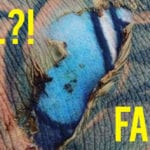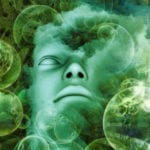 Weird Stuff
Weird Stuff  Weird Stuff
Weird Stuff  Politics
Politics 10 Political Scandals That Sent Crowds Into the Streets
 Weird Stuff
Weird Stuff Ten Bizarre Facts About The Doge Meme
 Our World
Our World 10 Ways Your Christmas Tree Is More Lit Than You Think
 Movies and TV
Movies and TV The 10 Coolest Stars to Set Sail on The Love Boat
 History
History 10 Things You Didn’t Know About the American National Anthem
 Technology
Technology Top 10 Everyday Tech Buzzwords That Hide a Darker Past
 Humans
Humans 10 Everyday Human Behaviors That Are Actually Survival Instincts
 Animals
Animals 10 Animals That Humiliated and Harmed Historical Leaders
 History
History 10 Most Influential Protests in Modern History
 Weird Stuff
Weird Stuff 10 Funny Ways That Researchers Overthink Christmas
 Politics
Politics 10 Political Scandals That Sent Crowds Into the Streets
 Weird Stuff
Weird Stuff Ten Bizarre Facts About The Doge Meme
Who's Behind Listverse?

Jamie Frater
Head Editor
Jamie founded Listverse due to an insatiable desire to share fascinating, obscure, and bizarre facts. He has been a guest speaker on numerous national radio and television stations and is a five time published author.
More About Us Our World
Our World 10 Ways Your Christmas Tree Is More Lit Than You Think
 Movies and TV
Movies and TV The 10 Coolest Stars to Set Sail on The Love Boat
 History
History 10 Things You Didn’t Know About the American National Anthem
 Technology
Technology Top 10 Everyday Tech Buzzwords That Hide a Darker Past
 Humans
Humans 10 Everyday Human Behaviors That Are Actually Survival Instincts
 Animals
Animals 10 Animals That Humiliated and Harmed Historical Leaders
 History
History 10 Most Influential Protests in Modern History
Top 10 Frightening Facts About Hallucinations
Seeing a unicorn in the bathtub is not always a sign of mental illness. Hallucinations are surprisingly common. Healthy individuals can trigger otherworldly experiences with coffee, the wrong medication, and gazing at a loved one.
The deep end is terrifying. Some people live with epic hallucination disorders that cannot be fully explained or treated. Experts are also stumped about when touch appeared to give police officers visions or why most grieving people see the dead.
See Also: Top 10 Unbelievable Types Of Illusions And Hallucinations
101 in 20 People Has Hallucinations
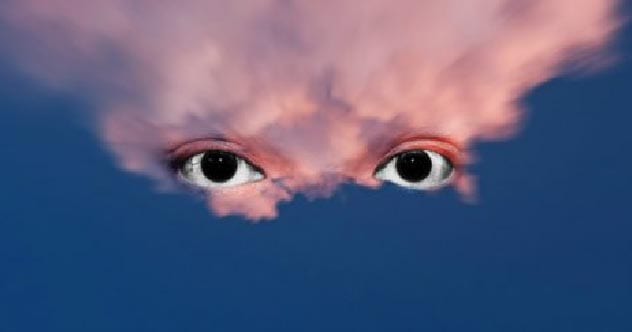
When the World Health Organization interviewed 31,000 civilians, the survey was designed to gauge the mental health of 18 countries. Instead, it encountered something truly odd. Around 1 in 20 people reported seeing at least one hallucination during their lifetime. What made this so weird was that none of them used drugs, alcohol, or dreamed the event. These were normal, healthy individuals.
People with psychotic conditions were screened out beforehand. There was a chance that some of the participants were undiagnosed. However, this failed to explain the rampant percentage of hallucinations, which seemed to be fractionally more common in women, singles, and the unemployed. Perhaps the most eye-opening lesson was that seeing things was no longer connected exclusively to serious mental illness. Most of the volunteers were healthy, high-functioning people with normal lives.
The frequency also created more questions than answers. The researchers cannot say why only one-third experienced a single hallucination in their past, while another third experienced two to five events in their life.
9Caffeine Is a Trigger

While clutching your fourth morning coffee, do you see clowns swinging on the boardroom’s chandelier? Relax, you are not losing your mind. The problem is not a mental illness. Blame the coffee bean. In fact, you can point a finger at anything that contains caffeine.
The magic number appears to be 315 milligrams of caffeine. A person can consume that much after just three cups of brewed coffee, six cups of tea, or nine colas. Even one strong boutique cafe coffee comes close. After consuming the given amount, the risk for auditory and visual hallucinations is three times higher than before.
The cycle can be vicious. When people suffer from caffeine-triggered hallucinations, few know the true cause behind it. Like millions of others, they rely on tea or coffee for emotional comfort and might consume more while trying to process the boardroom clowns. Caffeine is a stimulant that triggers the release of the stress hormone cortisol, increasing jumpy thoughts: more worry, more coffee, more hallucinations.
8The 10-Minute Experiment

There is a quick test anyone can take, and if you are susceptible, trippy times are up for grabs. The experiment lasts 10 minutes and involves staring into the eyes of another person. That is all that you need to do. Some say the best results happen while doing it with a loved one, and certainly, that will be less awkward than staring at a stranger on the bus.
Invented by Giovanni Caputo, an Italian psychologist, he tested 20 people to see if this simple act could change their consciousness. After the couples gazed at each other for 10 minutes, the results were curious. Apart from creating feelings of disassociation, the group hallucinated as if they were being paid. Strangely, they reported only certain kinds of visions.
Around 90 percent saw their partner’s face twist with some kind of deformity. For 75 percent, there was an encounter with a monster. Bizarrely, half of them reported that the face they stared at turned into their own, and 15 percent hallucinated that their partner turned into a relative.
7They Can Occur Even While Sleeping

Sleep-related hallucination is a sleep disorder categorized as parasomnia, which involves undesired events that come along with sleep. These sleep hallucinations are imagined events that seem very real and are mainly visual. They may also involve your senses of sound, touch, taste, and smell. They may even involve a sense of motion.
It is easy to confuse them with a state of dreaming. You may not be sure if you are awake or asleep. They may be like nightmares; however, when you wake up from a nightmare, you know that it occurred while you were sleeping. Nightmares are clearly recognized as a dream and are not thought to be real. You may also have complex visual hallucinations in the form of static images of people or animals. These tend to occur just after you are suddenly awakened. At first, you are often afraid and think that the images are real. You may jump out of bed in terror.
Sleep hallucinations generally occur at one of the two following times: As you are about to fall asleep or as you are just waking up. They can also be a sign of narcolepsy, especially if the events occur during the daytime. Sleep hallucinations and sleep paralysis may occur at the same time. You may also have separate episodes of sleep talking or sleepwalking.
One woman tells her story about sleep hallucinations. It had been a long day, so she went to bed later than usual and fell asleep quickly through sheer exhaustion. But instead of waking up peacefully in the morning, she half-woke in the middle of the night. And in the darkness of her bedroom, it slowly dawned on her that she couldn’t move your body … and that someone, or something, was watching her. A weight pushed on her chest, and she couldn’t even move her lips to call out for help. Even though she could move her eyes just a little, it was too dark to see anything. After a minute’s panic, the feeling passed. And she was then able to stumble to the bathroom to splash some water on her face and calm down from her moment of terror.
6Fake Voices Drown Out Real Speech
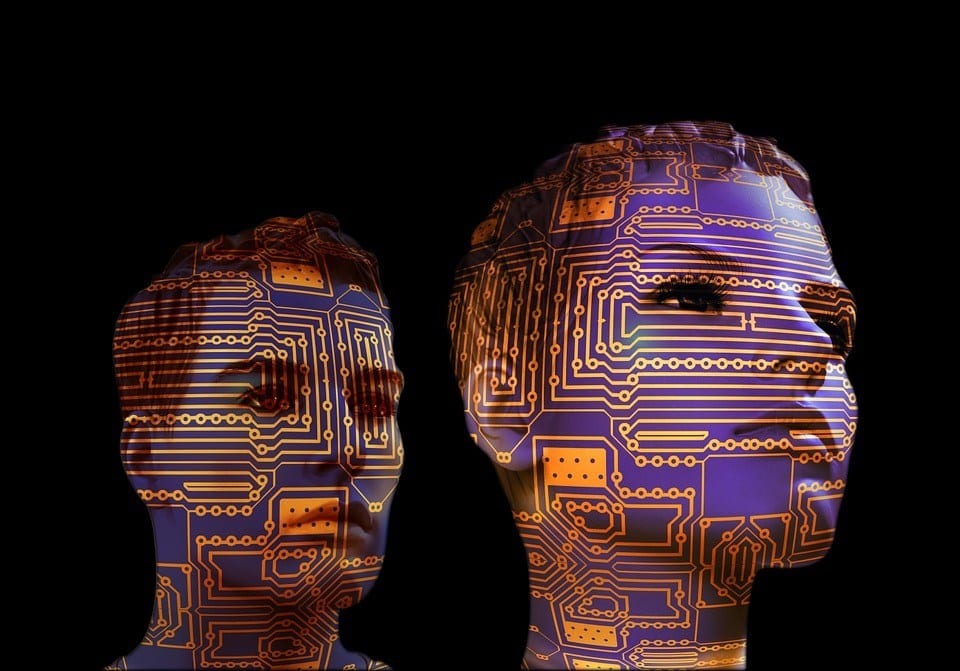
The trademark of schizophrenia is seeing and hearing things that do not exist. A particularly frightening manifestation is hearing voices. Some voices utter silken whispers, while others yell profanities. Needless to say, this causes suffering and difficulties for patients having to deal with an already difficult condition.
In 2012, researchers decided to find a way to train schizophrenics to ignore the fake voices. But first, they had to understand the brain’s role in this trickery. This was important because we hear with our brains as much as the parts that make up our ears. The results were astonishing and disturbing, but in the end, they provided the first real hope to eliminate fake voices.
To everyone’s surprise, hallucinatory talk drowned out the real voices. A peculiar brain malfunction activated regions when nobody spoke (triggering verbal illusions) and shut down when somebody spoke for real. The glitch was so bizarre that it almost seemed like some kind of ridiculous theory. Indeed, the researchers failed to find any reference to their conclusion in the history of medical literature. However, the study’s brain scans proved without a doubt that the glitch was real and powerful.
The discovery allowed them to design an iPhone app that trains the brain to respond normally to voices. One woman reported that her battle with the voices in her head had improved significantly. If more patients experience the same success, the study could provide a groundbreaking treatment in the fight against schizophrenia.
5A World Full of Dragons

Hallucinations were ruining a Dutch woman’s life. For as long as she could remember, the unnamed patient dreaded looking at other people—because their faces turned into dragon heads. Whenever she had to stare at someone, the person’s face elongated before turning reptilian. The ears grew longer, skin blackened, and the eyes turned large with bright-colored irises.
This may be fodder for those trolling the “reptilian aliens are among us” believers. But she was not one of them. Her condition is very real and debilitating. The patient failed to hold down a job because talking to dragons interfered with her social interactions. Worse, the creatures also poured from electrical sockets, computer screens, and even dark spaces.
The condition is called prosopometamorphopsia. Nobody knows the exact cause, but sufferers see distorted faces. However, the prolific and dragon-specific theme seen in the 52-year-old patient’s case was baffling. Blood tests, brain scans, and neurological examinations all turned out normal. Luckily, after many attempts, based on educated guesses, treatment with the anti-dementia medication rivastigmine put down most of the dragons, and she successfully went back to work.
4The Psychotic Side-Effects of Malaria Medication
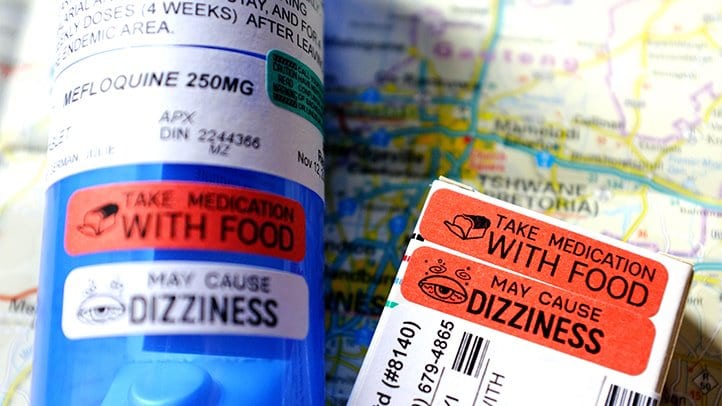
When taken once a week, Lariam helps to prevent malaria. But in some cases, the pills trigger horrific side-effects. One of the most notable cases happened to Tim Notee, a 20-year-old student who purchased Lariam in 2012, right before visiting Ghana.
The effects started while he was still in the Netherlands and packing for his trip. His mind became so scattered that his mother had to finish his trip preparations. After arriving in Ghana, the hallucinations began. Entire walls appeared to move. He thought he shared a body with a grasshopper. Within a week, he lost his grip on reality. Notee firmly believed that Jesus was his older brother, that he personally knew God, and fervently wrote a new religion.
He thought he could perform miracles, shaved his body to look more Ghanaian, and promised his worried father that they would meet Bruce Springsteen. Notee turned ill and was admitted to the hospital, where a doctor immediately recognized Lariam’s side effects and told him to stop taking the pills. But by now, Notee was no longer God’s second son. He was Jesus, and he told everyone.
He was airlifted to an emergency clinic where he told doctors his blood could cure malaria. At one point, the staff had to jump him because he tried to flee his treatment. Then his room’s TV “communicated” with him. The young man escaped the hospital and ended up at the TV station. After three manic weeks in Ghana, Notee was finally taken home and ensconced in a Dutch psychiatric facility. A treatment with anti-psychotic medication nearly zombified him, but Notee eventually made a full recovery.
Frighteningly, one in ten people has a bad reaction to Lariam.
3Charles Bonnet Syndrome

Few people have heard about a hallucination condition called Charles Bonnet syndrome (CBS). Most of us who hallucinate hear the odd voice or see something minor. But those who suffer from CBS experience a unique form of hell.
The syndrome is terrifying. The condition seems to be triggered by the loss or impairment of vision. Once CBS hits, patients see entire rooms morph into different locations, animals, people, entire buildings, massive vehicles, monsters, giant patterns, words that are scrawled everywhere, and things like spiders, water, and plants. Like, lots of them. The visions are also eerily quiet.
Despite the frightening nature of CBS, few people come forward. What holds them back is not the torment of the hallucinations but fearing that they will be diagnosed with dementia. However, most dementia-induced visions occur with sound. Because sufferers tend to stay silent, nobody knows how many people are affected or how common CBS truly is. Solid data about the condition and treatments are also practically non-existent.
2Most Mourners See the Dead
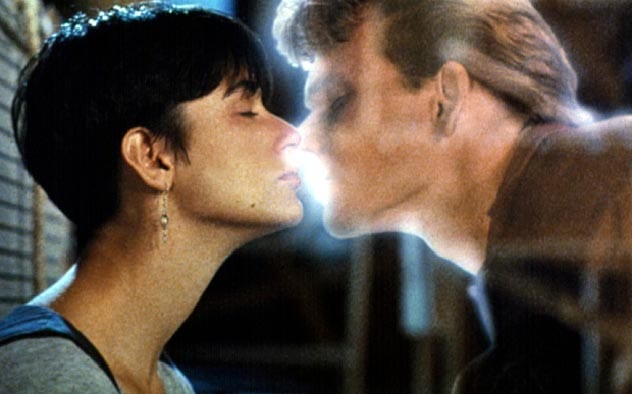
When we lose a loved one, most people will do anything to see them again. But when they actually get a glimpse of the deceased, the experience is so frightening that the majority never mentions the ghostly moment. The main fear is that others might think that they are crazy.
Seeing or hearing a dead loved one is surprisingly common. It even has a name. Scientists call these visions post-bereavement hallucinatory experiences (PBHEs). Up to six out of ten people either hear or see somebody they recently lost. The hallucinations can be vivid—the dead turn up sitting in their favorite chairs or call out the living person’s name.
PBHEs can be comforting or distressing, depending on the person’s views and stage of grieving. For some, it’s a sign that there is life after death. However, for now, scientists favor the possibility that PBHEs are related to the flashbacks experienced by individuals with post-traumatic stress disorder.
1They Spread Via Touch

In 2016, a woman in Oregon saw something upsetting. The 54 year old called the police and told them that eight people were attempting to take the roof off her car. Since it was 3 am, they were clearly stealing or vandalizing her property. But when the officers arrived, there were no metal-snatchers and the car was fine.
The woman called a second time, claiming that the people were back and sawing away at the vehicle. The cops did not bring cuffs. This time, they took her to the emergency room for hallucinations. However, she was declared fit and send home. The story might have ended there, but soon enough, four other people also started to hallucinate. One was the 78-year-old patient living with the woman (who was a caregiver), one was a hospital staff member who treated the caregiver, and two were among the officers who investigated—all four also started showing symptoms.
The blood tests showed nothing. No contaminants were found on the five individuals, inside the police car, at the caregiver’s residence, nor in the emergency room. Some believe that the group suffered from mass hysteria, which occurs when people “catch” something they see and fear in someone else. However, this theory is insufficient.
Sure, it was unpleasant to see the woman hallucinate and perhaps her patient subconsciously copied her. But police and hospital staff work with ill and disturbed people daily, making them uniquely qualified not to catch mass hysteria. The only thing the four had in common was that they touched the original patient.
The case remains unsolved.
For more lists like this, check out 10 Different Types Of Hallucinations That Humans Experience, and 10 Visions Of Hell That Will Scare The Crap Out Of You.


